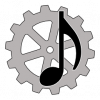
Posted
Today I have started to get to grips with Palettes, and I absolutely love this video (https://users.cognitone.com/content/modulation-navigating-circle-fifths)
I have overlooked it before, probably because it's in the HN section and I've always concentrated on the Synfire videos. But i LOVE the format of it, the way it pauses, gives you the option to 'play that section again', etc. If you haven't seen it, I recommend you watch it right away!
I mentioned a while ago about how one of the videos went too quickly and I kept having to pause and rewind, etc. It would be great if you could produce more videos in the format of the HN one!
But one question arises: When you have changed key, how does Synfire (or HN) decide which is the dominant key after doing a 'Transform >> Estimate Key, Relations and Scales'?
For example, if I have entered four chords in Dm and four in Bm, how does it decide which is the dominant one?
By the way, you can get some very interesting results from this by selecting any key, i.e. one that was not remotely connected to any of the keys you were in at the time :)
Tue, 2013-12-10 - 10:37 Permalink
Yes, the Palette is much underestimated in Synfire, because it is explained primarily for HN.
For example, if I have entered four chords in Dm and four in Bm, how does it decide which is the dominant one?
It generates several hypotheses and decides for the one that seems to be the best.
That "Dominant:" label however simply indicates which key is currently used the most in the selected progression. It does not refer to the dominant harmonic function.
Tue, 2013-12-10 - 14:04 Permalink
That "Dominant:" label however simply indicates which key is currently used the most in the selected progression. It does not refer to the dominant harmonic function.
I'm not sure what you mean by this. Do you recommend that after key changes, one should Estimate Key Relations and Scales so the the progression always has the same global key? Or should it be left alone?
Tue, 2013-12-10 - 15:12 Permalink
If there's a key change in your progression, leave it there. You can select different sections in a progression and estimate each of those individually. That's how a key change works inside a progression.
The global key is what musicians traditionally refer to as "key". Chords and scales may (temporarily) be outside the key. The "key" is the signature notated in a traditional score.
The other (relational) key is somewhat artificial: "What key would we have here, if the scale must strictly fit into it?". This could also be named the momentary key, or something like that.
Tue, 2013-12-10 - 19:45 Permalink
Thanks Andre I'm beginning to understand now. I apologise if I'm asking some dumb questions but you've probably realised I'm relatively new to this. There's no doubt more dumb questions still to come!
If there's a key change in your progression, leave it there. You can select different sections in a progression and estimate each of those individually. That's how a key change works inside a progression.
Can you explain please, when should a section be estimated? I'm sure I saw you do it in one of your videos but I can't remember which one.
Tue, 2013-12-10 - 21:18 Permalink
Estimation irons out unevenness and glitches in a progression by estimating the key and scales. You can estimate a section whenever you feel that
- you've edited the chords so much, the progression seems to be messed up
- you've added chords that you WANT to be intrepreted in another key
- you copied progressions from elsewhere and want to make them match
- you're just curious how the chords may look and sound in another key
Wed, 2013-12-11 - 01:01 Permalink
Beware also of the keyrole of the "harmonic functions" of chords in a chordprogressions, without notion of this you are aimless arranging with progressions ( you don't know how they working on the phrase(figures))
Can you explain please, when should a section be estimated? I'm sure I saw you do it in one of your videos but I can't remember which one.
I am still not familiar with the progression handling in Synfire : how to divide a chord progression and give the sections a name ..or how to chance to another key in the chordsections: example from Aminor to Cmaj
I remember that i got the impression that is rather diificult to ad a own progression..one should say in the progression editor i can assign own chord sections ?
Seems to be a hopeless task to find this basic handling..for me this must be more prominent in the GUI..only a menu driven handling for basic functions is userunfriendly.
Wed, 2013-12-11 - 21:01 Permalink
The term "section" is a bit misleading here. What petearch and me were referring to is simply a selected span on the progression.
The sections you can create in a standalone progression editor are a different thing: A collection of progressions for different purposes (sections of a song, in most cases).
A key change within a single progression is easy:
- Select a span, estimate it and pick a key.
- Select another span, estimate it and pick another key.
Thu, 2013-12-12 - 11:04 Permalink
Yes, i do see a Base progression tab, but cannot find how to select a span of chords to make a chord tab with a user chord progression..a new tab.
There are chord templates, but how to make this ?
I like to see a place where i can store my user chord progressions.
There are default chord templates shipped with Synfire ( like phrases too), why not user chord templates ?
Perhaps i can make this ?..it is too hidden all seems.
First make your own chord progression and store this in the progression editor under a tab ( jump menu )
I saw this in example file, but cannot make this.
There is a folder progression...from the file menu save as...should it not more userfriendly if in the progression editor there is a save feature for template handling
I am tottally lost with this...
It should be more prominent in the GUI of Synfire: span of chords handling and give it a name
A chord template ( user template ) making is now a puzzle seems to me..chordprogression is the cornerstone of the program.
Not a single idea to make template chordprogression ..there is tab Baseprogression..probably the chordprogressions shipped with Synfire are "Base progression"and if you make your own template..you get a own tab
Perhaps there is a folder named Base Progression ..so if a add a folder : User Chords there i could add my own template progression.?
Why not in the progression editor ..template handling ?.. it is a mess now.
Thu, 2013-12-12 - 11:13 Permalink
I haven't got time to explain properly now as I'm at work but see how you get on with this and I'll look how you're getting on later:
You do this from the Progression Editor and then Save As Template. Open it either from a palette (View >> Open Progression Editor) or from an arrangement (File >> Convert >> Extract Progressions).
There's another thread giving a bit more detail with one of juergen's nice GIFs:
https://users.cognitone.com/content/saving-progressions-templates
Thu, 2013-12-12 - 17:52 Permalink
Thanks all
For me is the place for handling "chords" is the progression editor..all other ways are valid from the menu and the library is handy for collecting chords
It is still userunfriendly dealing with chord spans/templates as it now is
I made a chordprogression in the editor..than file menu : convert: extract progression ..THEN a second progression editor comes up with the converted progressiom AND with a jumpmenu to name the the chord span: new section
This is userunfriendly---> is it not possible to add at least a button with "convert progression to section"to lead the user to this second progression editor
No way to add a user chord template from the progression editor..there is no connection between template and naming your own chord sections ..it is all scattered the information .. mess
Such simple thing a s making your own chordsection and store these is a puzzling endavour in Synfire ( for me and i am not the only person )
Perhaps there is room to improve this ?
Thu, 2013-12-12 - 22:10 Permalink
You really do not need to use the menus for this.
I think you do, if you want to store your own Harmony templates that are accessible from the templates menu along with the built-in ones. I thought that was what janamdo was trying to achieve.




